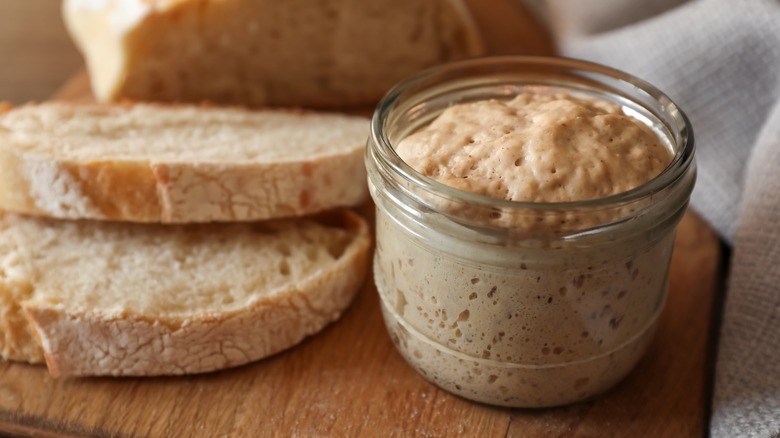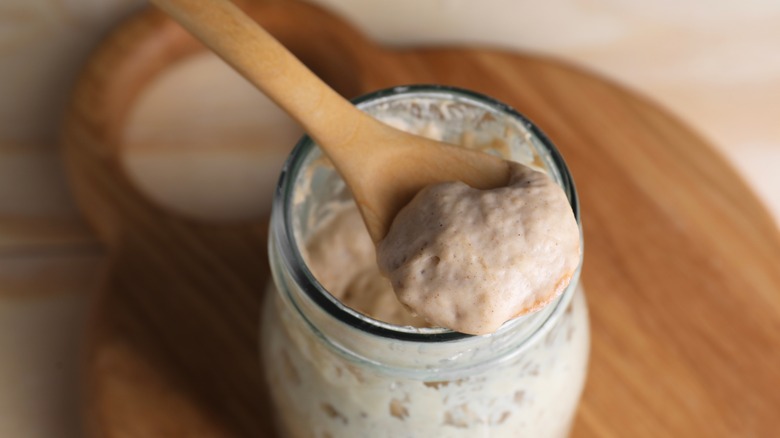How Long Mature Sourdough Starter Will Last Without Feeding It
Sourdough is an ancient method of breadmaking, and while it had a resurgence during COVID lockdowns, its tangy and complex flavor has made it an eternally popular tool in a baker's arsenal. Beyond taste, the science behind sourdough bread making is fascinating; it uses wild yeast captured from the environment as its leavening agent. This wild yeast is contained in a live culture referred to as sourdough starter, which can be kept living indefinitely for as long as it is are cared for.
On the one hand, it could not be simpler. The recipe for a sourdough starter is straightforward: two ingredients, water and flour, come together to create and sustain it. But protocol around using, feeding, and storing your starter over time can quickly become confusing. Luckily, once mature, a sourdough starter is quite resilient. There are ways you can extend its life without feeding it for long periods of time.
While developing your sourdough culture, you should feed your starter at least once daily at room temperature. However, once you have a stable, mature starter, skipping a day or two won't ruin it (though you should start feeding it daily again before baking with it). You have some options depending on how often you are willing to maintain it. You can store it in the fridge and feed it occasionally, with feedings up to 2 weeks apart.
When should soudough starter be fed?
A mature sourdough starter is simply one that is ready to bake with. It has a stable yeast colony that will reliably leaven bread. A mature starter develops over at least two weeks, but waiting a month or more is best. The starter is ready to use for baking, or "ripe," when it reaches maximum (that is, double) volume 8-12 hours after feeding, smells of fresh yeast, and has a spongey appearance when stirred.
The cool temperature of a refrigerator slows down the natural process of yeast production. Therefore, you don't need to keep as rigorous a schedule to keep sourdough starter alive in the fridge; try to feed it at least every other week, though you may be able to revive it even after that. When you want to bake with it again, feed it regularly for at least two days until it regains its ripeness.
There is also a way you can save your sourdough starter for a future date without having to worry about feeding it at all: you can dry it. By drying out your sourdough starter and breaking it into pieces, you can preserve the live cultures and reawaken them whenever you get the desire to bake with it again; if stored properly, the dried starter will last years and years. Just know it needs to be in a tightly sealed container, and needs several days of feedings to return to a bake-ready state.

